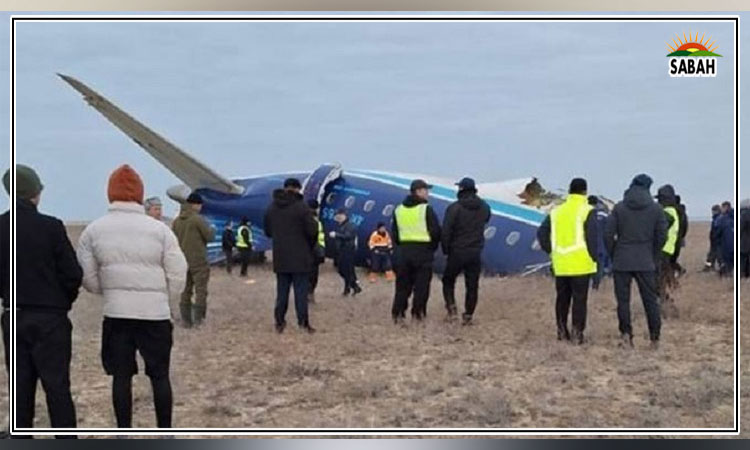The story of abandoned weapons and equipment in Afghanistan…Inam Ul Haque
We continue to explore the collapse of Afghan National Defence and Security Forces (ANDSF) in August 2021, as chronicled in February 2023 report by SIGAR (Special Inspector General for Afghanistan Reconstruction), a US government entity.
Since 2002, the US-supplied equipment worth approximately $18.6 billion to ANDSF including around 300 fixed-wing and rotary-wing aircraft; over 80,000 vehicles of several types; nearly 600,000 weapons (all calibers); communications equipment, night vision goggles and biometric systems. In over two years alone (2018 to collapse in 2021), ANDSF received 84 aircraft, 6,551 vehicles, 18,956 weapons and 299 night-vision devices.
As per a March 2022, US DOD report to Congress, nearly $7.2 billion worth of aircraft, guns, vehicles, ammunition and specialised equipment (night vision goggles, biometric devices, etc) remained in Afghanistan after Allies calamitous withdrawal, including at least 78 aircraft, 9,524 air-to-ground munitions, over 40,000 vehicles, more than 300,000 weapons, and night vision, surveillance, communications and biometric equipment.
The report shared with Congress assessed most aircraft abandoned but not destroyed outside Hamid Karzai International Airport at the final departure as non-operational. Those capable of delivering precision munitions were either rendered non-operational or destroyed in situ. During August 2021, AAF pilots flew 64 aircraft (Mi-17s, UH-60s, C-12s, C-208s, AC-208s and A-29s) to Uzbekistan and Tajikistan. The IEA had asked Tajikistan and Uzbekistan to return these, while the US tried to retrieve these planes through diplomatic settlement. There was sizeable equipment outside Afghanistan under repair or held in reserve at the time of collapse. Of this, DOD repossessed 127 former AAF and Special Mission Wing (SMW) aircraft and placed these in the Continental US or at Allied facilities in the UAE, Bahrain, Kuwait, Europe and Portugal, etc.
Equipment removed from Afghanistan included some 500 vehicles, 5,570 pieces of communication equipment, radios and encryption devices, etc, 1,741 weapons and weapon systems, 121 pallets of medical equipment and 650 pallets of base support, force protection, surveillance, construction and repair parts and tool equipment, etc.
Likewise the US destroyed in situ 78 aircraft, 26 helicopters; 55 ground vehicles, including 27 Humvees, 23 Turkish MRAPs and, 3 light tactical all-terrain vehicles; 47 other MRAPs, 2 MRAP recovery vehicles; 4 weapons systems, including two M119 105mm Howitzer guns, rocket artillery, mortars, Phalanx guns and 6 RQ-21 Unmanned Aerial Systems and one Ground Control Station, etc.
DOD acknowledged low confidence in datas accuracy as the equipment data inventory system (CoreIMS) server crashed (or was made to crash) in early 2021, losing data on materiel provided after March 2021. In 2009, the GAO (Government Accountability Office) reported, DOD did not have complete inventory records for around 36 per cent of weapons supplied to the ANDSF during 2004-2008. The US was not maintaining a complete record of night-vision devices as of 2012. In 2015, CSTC-A could not provide a list of vehicles transferred to ANDSF. It weakened DOD oversight and accountability, encouraging pilferage, theft and unauthorised resale even to the IEA forces.
US NSA Jake Sullivan acknowledged, saying; We dont have a complete picture, obviously, of where every article of defense materiel has gone, but certainly a fair amount of it has fallen into the hands of the Taliban. A Taliban official informed Al Jazeera about capturing more than 300,000 small arms, 26,000 heavy weapons, and about 61,000 military vehicles. DOD acknowledged its inability to retrieve the materiel due to non-recognition of the IEA. An unascertainable percentage made to the black market on Iran-Afghan-Pakistan border. Iran had reportedly purchased weapons and equipment in bulk.
Most of the fallen equipment is used by IEA soldiers. They are seen wearing the US clothing, equipment, brandishing American weaponry. They use pickup trucks and armoured vehicles left behind by the US Forces. Their special operations troops (313 Badri Brigade) wear US helmets with night vision mounts and carry M4 rifles fitted with latest gunsights.
The IEA has demonstrated some ability to use advanced equipment. In a parade in 2022, dozens of American-provided armoured vehicles participated with Mi-17 helicopters flying overhead. An unconfirmed report indicates IEA conducting its first airstrikes against resistance in Panjshir. As per Abdul Qahar Balkhi, the suave English-speaking foreign ministry spokesperson, IEA retrieved some equipment, removed from Afghanistan, including weaponry, Humvees, rangers, fire trucks and other vehicles.
There are also reports about aircraft repairs by the IEA. One senior Taliban leader claimed repairing half the aircraft rendered non-operational by the withdrawing forces at Karzai Airport. Another official claimed repairing six Black Hawks helicopters. Reportedly around 4,300 former Afghan Air Force personnel (almost half of the former AAF strength) including 33 pilots have joined the IEA Air Force. IEA encourages pilots and other technical manpower to rejoin. However, maintenance and spare parts related challenges remain.
Despite removal of sensitive equipment by the US forces, IEA and other countries mined through leftover sensitive optical and communications equipment, computer software/hardware on board certain aircraft and biometric data. Some of the hardware was a representative laboratory to build, test and launch cyberattacks. Some captured electronic countermeasures (ECM) gear to detect IEDs is feared to enable hostile forces to develop counter capabilities.
A New York Times report highlighted concerns about American-made equipment (pistols, rifles, grenades, binoculars and night-vision goggles) falling to gun dealers, Al-Qaeda, ISIK, Pakistani and central Asian militant groups, etc. TTP fighters and Baloch militants are better armed and equipped due to the abandoned American inventory.
Comically, DODs inability in accurate record-keeping and tracking its inventory emanated from inventory being maintained over two separate and incompatible computer systems. Tracking equipment was more difficult once transferred to ANDSF. The US had similar inventory problems in Iraq and Syria. It is now trying hard to avoid repeat of similar situation in Ukraine.
The DOD had made a treasure trove of human data by collecting biometrics (to ensure identity dominance) of anyone in operational area, all locally employed personnel and third-country nationals working on a bases, all non-US and local contractors and all locals undergoing military training. This immensely important intelligence data included fingerprints, iris images, facial images and even contextual data like addresses, sources of employment and tribal affiliation, etc. This data reportedly remained inaccessible to IEA. However, IEA surely has got into the Afghan-owned and operated biometric databases Afghan Automatic Biometric Identification System (AABIS) and e-tazkira, the national ID card system after re-employing former Afghan experts.
Courtesy The Express Tribune












